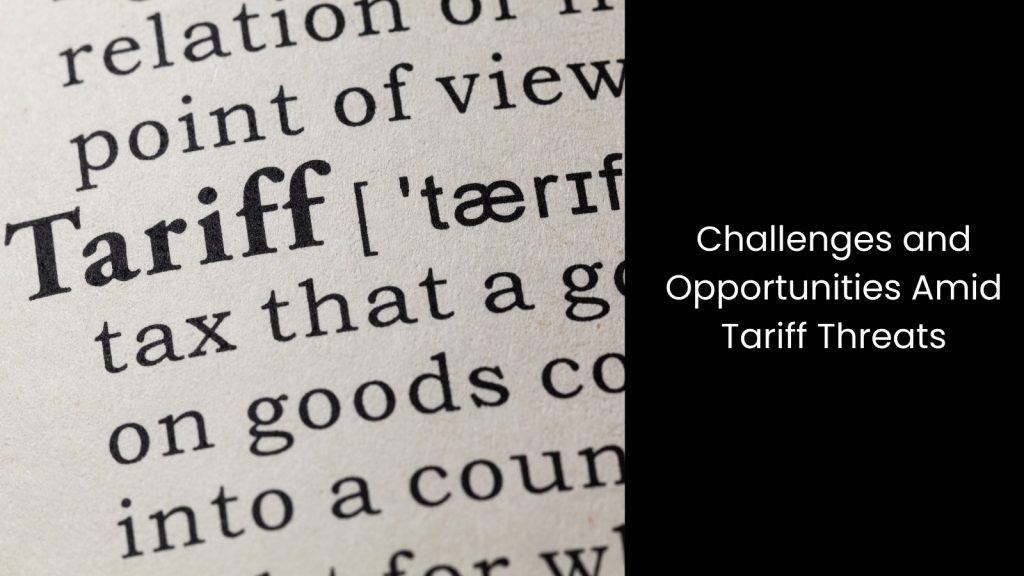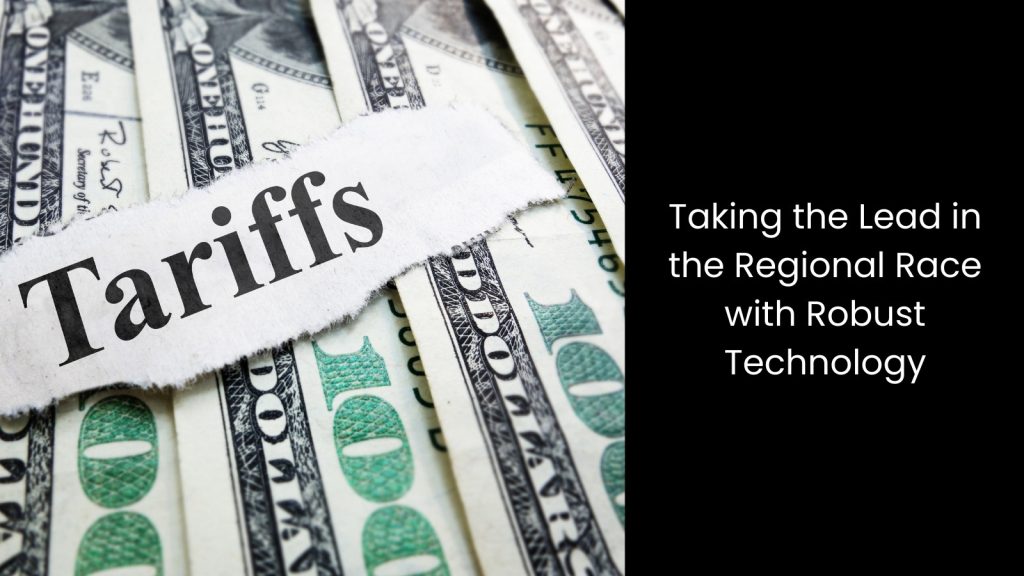Did you know that Singapore’s manufacturing sector is racing against the clock to stay ahead of proposed tariffs by US President Donald Trump? As the clock ticks toward January 20, when Trump plans to implement new tariffs on imports from countries like China, Canada, and Mexico, Singapore’s factories are bracing for impact. Trump’s plans include imposing up to 20% tariffs on most foreign goods, a move that could disrupt global trade flows. With regional economies also scrambling to adapt, Singapore has joined the race to buffer itself from the ripple effects of these trade barriers. The real question is: Can Singapore navigate these challenges and outpace other regional giants?
This article covers everything about Singapore’s challenges due to new tariffs and potentially emerging opportunities.
We will understand
What is Occurring Right Now?

- According to reports, Singapore’s manufacturing sector is racing to stay ahead of Donald Trump’s proposed tariffs, which could disrupt global trade.
- It is indeed good news that this sector’s performance has been strong, with the Purchasing Managers’ Index (PMI) hitting 51 in November. This signals 15 straight months of growth. However, according to reports, electronics have been the star performer, achieving a PMI of 51.6, its highest in over six years, thanks to surging demand for semiconductors used in AI and embedded chips for cars and devices.
- If we look into other Asian competitors, countries like India, China, South Korea, and Vietnam have also shown manufacturing growth, while Malaysia and Indonesia struggled with contraction. Economists believe Singapore’s factories are pushing output to meet orders before Trump’s tariffs, which include a 20% levy on foreign goods, take effect.
- Experts point to manufacturers relying on current raw material inventories, suggesting inputs might need a boost soon. While Singapore could benefit from trade flow shifts as companies avoid tariffs on China, risks linger.
- Economists see strong short-term momentum, especially in electronics, which drives nearly half of Singapore’s manufacturing output. However, they warn the pace might slow as global realities settle in. Now, the whole world is looking at Singapore’s ability to adapt to trade changes, as this will shape its manufacturing growth through 2025, keeping the focus on resilience and innovation.
Challenges and Opportunities Amid Tariff Threats

Challenges
Potential Disruption from New Tariffs
Trump’s proposed tariffs of up to 20% on foreign goods could severely disrupt global supply chains, putting Singapore’s manufacturing exports at risk.
Manufacturers may face increased costs for materials and reduced demand as international trade flows shift. This is why companies rush to fulfil orders before these tariffs take effect, but this short-term boost may not be sustained.
If trade tensions intensify, manufacturers exporting to affected regions might experience delays, higher expenses, and declining competitiveness.
Singapore’s position as a global trade hub makes it vulnerable to these disruptions, creating an urgent need for businesses to diversify supply chains and markets.
Increased Competition within ASEAN
Singapore faces intensifying competition from neighbouring countries like Vietnam, Thailand, and the Philippines, which also show strong PMI growth.
These countries attract foreign investments by offering cost advantages and rapidly expanding industrial bases. As manufacturers look for alternatives to China due to trade tensions, ASEAN nations compete for the same.
Singapore’s higher production costs and dependence on advanced manufacturing could put it at a disadvantage.
Dependence on Global Economic Stability
Singapore’s manufacturing growth hinges on the stability of major economies like China, which remains uncertain due to ongoing trade tensions and policy changes.
A slowdown in these economies could ripple across Singapore’s export-reliant industries.
Although demand for electronics remains strong, global economic instability could weaken investor confidence and disrupt trade flows.
Risk of Over-reliance on Electronics
Electronics dominate Singapore’s manufacturing growth, but over-reliance on this sector brings risks.
Semiconductor demand remains high, driven by AI and smart devices, but any slowdown in global demand or disruptions to supply chains could hit hard.
With electronics contributing nearly half of the manufacturing output, diversification becomes critical. Singapore must nurture other high-value industries, such as precision engineering and biomedical manufacturing, to reduce vulnerability.
Volatility in Raw Material Supplies
Manufacturers in Singapore currently rely on existing raw material inventories to sustain production, but this approach is not as sustainable as it seems.
Tariffs could disrupt raw material sourcing, leading to price hikes and supply shortages.
The slower growth of input supplies compared to finished goods shows that this challenge looms on the horizon. Manufacturers must secure reliable sources and explore alternative materials to mitigate risks.
Opportunities
Benefiting from Supply Chain Shifts
Singapore is wise enough; it can take advantage of the ongoing shift in global supply chains, especially as companies look to move away from China to avoid U.S. tariffs.
Not to mention that if manufacturing slows down in China, Singapore may become an attractive alternative for businesses seeking stability in the region.
With its strategic location, strong infrastructure, and skilled workforce, Singapore can attract new investments and boost trade flows. The positive growth in Singapore’s manufacturing sector, particularly in electronics, shows that it is ready to handle the surge in demand.
Electronics Sector Momentum
Singapore is in a prime position to lead the electronics sector, especially with the rising demand for semiconductors driven by AI, embedded chips, and automotive applications.
As global demand for these technologies grows, Singapore’s strong manufacturing base, particularly in electronics, ensures it can meet the need.
With its advanced infrastructure, skilled workforce, and favourable business environment, Singapore can continue to attract investments and remain competitive in the global electronics market.
Regional Collaboration
Singapore can strengthen its position amid Trump’s proposed tariffs by enhancing collaboration within ASEAN and North Asia.
If it is possible to work closely with neighbouring countries, Singapore can build stronger trade networks that minimise the potential impact of these tariffs.
ASEAN’s shared interests in maintaining robust supply chains can help mitigate disruptions, allowing Singapore to diversify its trade routes and sources of raw materials.
Moreover, countries in North Asia, such as South Korea and Taiwan, have thriving electronics sectors, offering opportunities for joint ventures, tech exchanges, and regional solutions that increase the competitiveness of Singapore’s manufacturing sector, particularly in electronics and semiconductors.
Innovation in Manufacturing
Although navigating the uncertainties of Trump’s proposed tariffs is challenging, Singapore can seize the opportunity to invest in automation, artificial intelligence (AI), and advanced manufacturing techniques.
As tariffs push manufacturers to find ways to stay competitive, Singapore’s manufacturing sector can accelerate its focus on efficiency through innovation.
Embracing automation will help reduce labour costs, while AI can optimise production lines and supply chains.
Expansion into Emerging Markets
Like every dark cloud has a silver lining, Singapore can seize the opportunity to expand into emerging markets in South Asia and Africa, offsetting challenges posed by tariffs from traditional trading partners.
As US tariffs on countries like China, Mexico, and Canada escalate, Singapore can strategically pivot to these regions, capitalising on rising demand for electronics and manufacturing.
South Asia and Africa offer untapped potential, where growing economies and increased infrastructure investment present new opportunities. When diversifying trade routes and building stronger ties with these markets, Singapore can reduce dependency on high-risk partners, ensuring continued growth and stability for its manufacturing sector.
How Cerexio Can Help the Manufacturing Industry to Accomplish Its Goals in 2025

Cerexio presents robust software solutions like Manufacturing Execution System, Production Order Management System etc., driven by automation, robotics, Machine Learning and Artificial Intelligence capabilities to craft manufacturing excellence and order fulfillment. Using these tools, you can meet your production deadlines and streamline the operational workflow smoothly.
Taking the Lead in the Regional Race with Robust Technology

Since you have read this whole article, you may understand how important it is to stay ahead of the competition at this moment. The best way to achieve your goals is by implementing robust technology. With the right strategies, the mantra of taking the lead in this manufacturing race is at the doorstep.
